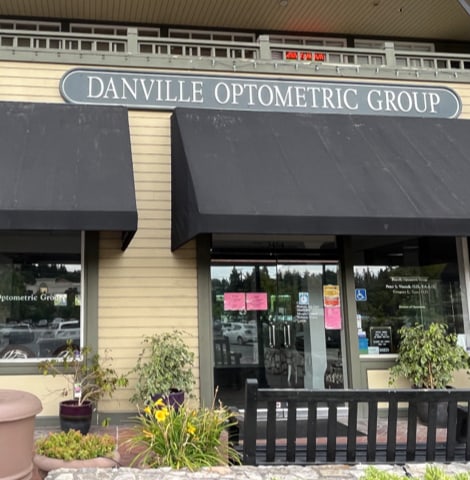In California, where the sun illuminates stunning landscapes and beckons exploration, maintaining good eye health is essential for fully appreciating the beauty around us. However, determining what your insurance covers regarding eye care can be complex.
When it comes to routine vision insurance coverage in California, vision coverage varies widely among plans and providers. However, most plans typically include common aspects such as routine eye exams. Additional coverage, such as prescription eyewear, varies depending on your plan.
Vision Insurance vs. Medical Insurance in California
It’s important to review your individual policy or consult with your insurance provider to fully understand the extent of your vision care coverage. There is a major difference between vision insurance and medical insurance.
Vision insurance allows for routine vision care such as annual eye exams and materials for glasses/contacts. Medical insurance can NOT be used for routine eye exams. Even Medicare does not cover routine vision care.
With an appropriate medical-approved diagnosis, it is possible to utilize a patient’s medical insurance for a comprehensive ophthalmological eye exam. The patient often pays for the refraction (determining the eyeglass prescription), because this is part of vision care and therefore not covered by medical insurance. The rest of the eye exam and any subsequent visits needed to treat medical conditions are usually covered by medical insurance.
Most vision insurance plans in California cover:
- Routine eye exams: These are essential for monitoring vision changes and detecting eye conditions like glaucoma and macular degeneration.
- Prescription eyewear: This may include coverage for frames up to a set amount and patients will usually pay a copay for their materials and then the difference based on the frame they choose. Lenses will have a copay and then you will pay the difference for items such as progressive lenses, thinner lenses, photochromatic (transition) or anti-reflective coatings or blue light filters.
- Contact Lenses: This may include coverage for part of the contact lens examination, fitting of contacts, and limited follow-up visits. This usually requires a copay or a percentage of the total costs based on your correction and complexity of fitting the lenses. The actual costs of the contact lenses depends on the type, frequency of replacement, and amount. Most insurance provide a set amount and the patient is required to pay the difference. In most cases, it is always better to purchase from your in-network provider as they have rebates that online stores, Costco, and 1-800 contacts cannot match.
Most medical insurance plans cover:
- Ophthalmological medical exams: These are necessary to detect and monitor disease progression. Not only detecting conditions such as glaucoma, diabetes, cataracts, or macular degeneration, allergies, or dry eyes but also treating these conditions. This would also include any follow-up medical visits required to follow up once treatment has been initiated or recommended. This exam does not cover the refraction (prescription for glasses). Many of the same components of a routine eye exam are included in this type of comprehensive ophthalmological exam.
- Treatments for eye diseases/conditions: Some plans may cover diagnostic testing (visual fields, OCT, photography, etc.) for these conditions.
- Follow-up medical exams: These are covered by most medical insurance as they are critical for the success of the treatment and plan.
- Eye surgeries: Certain elective corrective surgeries like LASIK or PRK or SMILE are not covered. Medically necessary procedures like surgery for cataracts, eyelids (blepharoplasty), or keratoconus are covered based on your doctor’s diagnosis and insurance plan.
What’s Included In a Regular Eye Exam?

In a standard eye exam, your optometrist will perform various tests to assess your visual acuity and screen for potential eye conditions. These tests can include:
- Visual acuity test: This test uses a chart or a viewing device with progressively smaller letters to measure how clearly each eye sees.
- Refraction assessment: If you’re experiencing vision issues, this test determines the lens prescription needed to correct your vision to normal.
- Eye muscle movement test: This test evaluates the muscles responsible for eye movement, making sure they’re strong and can follow objects without issue.
- Peripheral vision test: Loss of peripheral vision can be a sign of glaucoma; this test checks for that and other potential problems.
- Pupil response to light: Your eye doctor will check how your pupils adjust to light and objects coming close to your eyes.
- Intraocular pressure test (tonometry): This measures the pressure inside your eyes and is an important test to screen for glaucoma.
- Examination of the anterior segment of the eye: Using magnification and a bright light, the optometrist can examine the front part of your eye, including the eyelids, eyelashes, conjunctiva, cornea, iris, anterior chamber, and lens.
- Retinal examination (ophthalmoscopy): Dilating your pupils allows your doctor to examine the back of your eyes, assessing the health of the vitreous, retina, optic nerve, and blood vessels.
A regular eye exam is thorough, assessing both your visual acuity and the health of your eyes.
Spotting issues early can significantly affect treatment, making these exams indispensable tools in maintaining overall eye health.
Investing in Medical Insurance in California
Considering the importance of eye health, investing in medical insurance might be a wise choice for many Californians.
The cost of medical insurance varies depending on the plan and provider, but consider it a small price to pay for the health of your eyes and the clarity of your vision. There many types of medical insurance.
PPO (Preferred Provider Organization)
Open plans that allow patients to choose their own private practice doctor. Most eye doctors accept most PPO plans. This is the best coverage and there so many levels of coverage but these generally allow the patient to receive any type of care they require without the need for a primary physician (gatekeeper like in an HMO).
Medicare is a PPO and covers 80% of all medical visits. Once a patient has supplemental insurance which covers the remaining 20%, then the entire office visit is covered 100%. Patients can book appointments directly with any type of specialist without needing a direct referral. You can be on vacation and see any doctor or hospital and it would be covered based on plan details
HMO (Health Maintenance Organization)
Are closed plans that only allow patients to see their employed doctors and patient must have a primary physician (gatekeeper) who must refer patients to specialists when they deem necessary.
Kaiser and Medicare Advantage are HMO’s. Patients are not allowed to go directly to a specialist. They must be referred and it requires an extra step, exam, and additional copays. Private practitioners are not allowed to bill HMO for any of your care.
You must only see doctors who are assigned by your primary care physician. If you want to see a private practice doctor, then this visit would not be covered.
In the end, whether you’re covered through PPO, or considering private medical insurance, California offers a plethora of resources to make sure your eyes are well taken care of.
Remember, your vision is invaluable–not just for observing the beauty of the Golden State but also for navigating the world around you with confidence and ease.
For more detailed guidance tailored to your personal vision care needs, don’t hesitate to reach out to us at Danville Optometric Group.
Our team is here to help you see clearly and we accept almost all PPO insurances (Blue Shield, Blue Cross, Cigna, etc and Medicare). Call us and find out how we can use both your vision insurance (VSP, EyeMed, Spectera, Davis) and medical insurance to create the best in care for you and your family.













